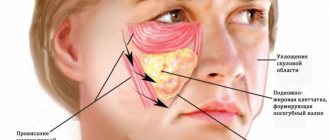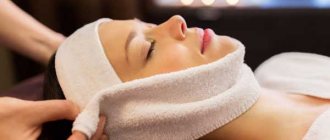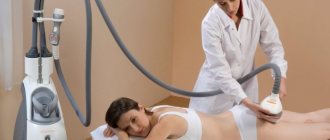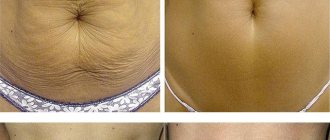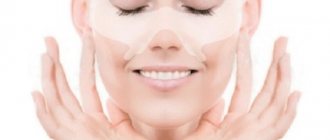- September 27, 2019
- Other states
- Natalia Kalinichenko
Every person faces the problem of swelling sooner or later. If we are talking about the legs, then in addition to swelling, heaviness and aching discomfort in the lower extremities are disturbing. Naturally, the question arises, how to get rid of swelling?
And there are many reasons for this condition. This may include standing for a long time, too high an atmospheric temperature, or consuming large amounts of liquid or alcohol.
Possible reasons
Any swelling occurs due to the inability of the body to process and rid the body of excess fluid as quickly as possible. Typically, water is excreted through capillaries, enters the kidneys and leaves the body. However, if you are worried about high venous pressure or the concentration of proteins or sodium in the body is increased, then edema may appear.
External negative factors include:
- drinking large quantities of drinks and water;
- high salt content in dishes;
- physical activity, including standing for long periods of time;
- uncomfortable high-heeled shoes;
- excess body weight;
- alcoholic drinks;
- climatic features of the region.
Women in an interesting position in their final stages also often face this problem. The cause may be medications or insufficient magnesium in the body. High vascular permeability is also often the cause of swelling.
A number of pathologies lead to unpleasant consequences. In particular, problems with blood vessels and heart, thyroid disease, diabetes, metabolic disorders and liver and kidney diseases.
If the cause is unknown, the swelling itself is asymmetrical, and does not go away after rest, then you will have to consult a doctor. In other cases, you can help yourself at home.
Symptoms of the disease
Swelling is not always so harmless. Sometimes they are one of the symptoms of serious diseases of the internal organs. Then you won't be able to get rid of them quickly. It will be necessary to cure the disease that led to them. In such cases, in addition to edema, there are a number of pronounced specific symptoms of damage to these systems, since edema appears already in the later stages of pathologies.
Heart failure. The mechanism of edema formation is mainly associated with increased blood hydrostatic pressure. The first appearance of swelling on the feet and legs is typical. They occur more in the evening, after a long stay in a standing position. Later they appear in the lumbar region, sacrum in a horizontal position. In later stages, edema is determined entirely in the subcutaneous fat. Pathological accumulation of fluid in the pleural, abdominal cavities, and pericardium is possible.
Liver diseases. Edema is characteristic of the late stage of liver failure, more often cirrhosis. With liver failure, its protein-forming function suffers. This leads to a low level of protein in the blood and, consequently, a decrease in oncotic pressure and hypoproteinemic edema. They are localized on the abdominal wall, legs, and lower back.
Kidney failure . The leading cause of kidney diseases accompanied by renal failure is the retention of salt and water in the body. Such swelling forms in the upper part of the body and appears in the morning.
With pathologies of these organs, endocrine changes are inevitable, resulting in increased absorption of water and sodium in the kidneys. Which also leads to swelling.
Allergic edema is also directly associated with severe inflammatory manifestations. They can be localized in the lower and upper eyelids, and also spread to the entire face. In the mornings, their occurrence is observed as a reaction to the down filling of the pillows.
In such cases, swelling can be removed only with the help of anti-allergenic drugs. The danger of allergic reactions is that swelling may not be limited only to the eyelid area or face, but may spread to the upper respiratory tract. Which will lead to breathing problems. This complication is extremely dangerous for children.
Foot treatments
How to get rid of swelling of the lower extremities? If the problem bothers you on an ongoing basis, then take a contrast shower regularly. Pay great attention to your shins, where they connect to your knees. The veins in these places very often suffer from venous insufficiency, which is the cause of swelling.
You can do the so-called water march. Fill a basin with cold water and march in it. If there is a body of water near your house that allows you to run around it in the sand, then do it. This is an excellent exercise and helps eliminate puffiness. There is an opportunity - visit the pool, it has a hydromassage effect on the entire body.
Healing baths
To eliminate swelling on the legs, it is recommended to take baths with sea salt. For 3 liters of hot water you will need 3 tablespoons of salt and 1 tablespoon of soda. Do the procedure for 20 minutes.
You can take a bath with medicinal herbs, from which a healing decoction is first made. St. John's wort, elderberry, mint and chamomile are suitable for the decoction. Herbs can be added in equal parts. The decoction is mixed with hot water and the feet are immersed in it for 15 minutes.
Pine needles and essential oils are also suitable for these purposes.
How to eliminate problems under the eyes using improvised means
Do you need to run to work, but are you afraid to look in the mirror? How to get rid of swelling on the face quickly? The easiest way is to make a compress from venotonic. It could be Ginkor or Troxevasin. You should know that creams and gels produced to eliminate edema are developed on the basis of ointments for veins and hemorrhoids, only they contain slightly less active substances.
The cream is applied to a damp gauze pad and placed on the eye area for 10 minutes. After 10 minutes you will see a miraculous effect. However, it is not recommended to use this method very often.
Problems with veins: symptoms and directions of treatment
Varicose veins are a pathology of these vessels associated with their tortuosity, fragility of the capillary walls, and destruction of the valve apparatus. Already at the first stage of the disease, the following symptoms appear:
- spider veins on the back of the legs;
- bulging veins, hematomas;
- pain in the knees, feet, ankles when standing for a long time;
- severe swelling of the legs in the heat and with physical fatigue associated with stress on the legs.
The disease usually appears due to a hereditary tendency in humans. If the walls of the veins and capillaries are strong, then there is virtually no risk of suffering from varicose veins. Even if you put enormous stress on your legs, the disease may not appear. And people with a tendency to varicose veins can regularly spend five to six hours on their feet, or, on the contrary, lead a sedentary lifestyle - and the disease will not be slow to appear in them.
How to deal with edema if the cause is varicose veins? It is necessary to avoid prolonged stress on the legs. Leisurely walking for ten to twenty minutes is helpful. Wearing compression tights and stockings is recommended.
How to deal with leg swelling caused by varicose veins during an exacerbation of the disease? The following tools have proven themselves to be effective:
- Heparin ointment.
- “Troxerutin.”
Problems after drinking alcohol
The best way to get rid of swelling from alcohol is not to overdo it the night before. But if this has already happened, folk remedies can help cope with swelling.
The most common recipe is a lotion made from grated fresh potatoes. It is placed in gauze and on the eye area for 15-20 minutes. If you have medicinal herbs, brew them. Chamomile, calendula or St. John's wort will do. Soak a napkin in the broth and apply it to the eye area. Making tea will do if you don't have any herbs on hand.
An effective way to get rid of swelling in the morning is to treat the swollen skin with ice cubes. This can be regular frozen water or a decoction of medicinal herbs. Cold activates lymphatic flow and accelerates metabolic processes.
Treatment
The main direction of treatment for edema is to identify and treat the disease that led to it.
Diuretics. Their use helps remove excess water from the body. When it decreases, the severity of any edema decreases. Help is possible not only with the help of medications, but also with folk recipes (herbal diuretic teas).
If the cause of eyelid swelling is inflammation, then you can remove it by using antibacterial drops or eye ointments.
Thus, such an unpleasant phenomenon as swelling of the face, lower or upper eyelids can be easily dealt with if it is not a manifestation of severe pathologies of internal organs.
Medicinal tinctures
If you are regularly bothered by swelling and do not know how to get rid of swelling on your face, then it is recommended to use tinctures made from natural medicinal herbs. The modern fast-paced lifestyle is not conducive to maintaining beauty and health; it is not always possible to get enough sleep. For these reasons, excess fluid may be retained in the body, and swelling on the face appears in the morning.
The easiest way is to make decoctions from rose hips. They are available and are an effective diuretic. It is recommended to steam the fruits in a thermos and drink the tincture in small portions throughout the day.
How to get rid of edema using folk remedies? Corn silk tincture will help solve this problem. A glass of hot water will require 30 g of dry material. Infuse the product for about 3 hours. Then take 1 tablespoon for 5 days, always after meals.
You can drink horsetail tincture for 2 weeks. Dilute 4 tablespoons of horsetail in about a liter of boiling water and leave for 60 minutes. You should drink the entire mixture in small sips throughout the day.
But you should always remember that all diuretics quickly remove calcium. For this reason, during the course of treatment it is best to take calcium supplements and under no circumstances drink decoctions for too long, no more than 2-3 weeks in a row.
It is best to avoid pharmaceutical chemicals. Indeed, they quickly relieve swelling, but they wash out fluid even from blood vessels, and this poses a risk of blood clots.
Edible medications for swelling
- Cucumber pickle is a slow-acting but very effective remedy for swelling of any origin. It is especially recommended for fluid accumulation in the abdominal cavity. Drink the decoction 2 glasses a day daily, regardless of meals, for a sufficiently long period until the condition improves.
- Cut two medium onions into thin slices and sprinkle with a little sugar, leave overnight to let the onions release their juice. In the morning, squeeze out the juice and take 2 tbsp. spoons a day on an empty stomach.
- Mix equal parts horseradish root juice and cranberry juice. This remedy effectively stimulates the secretion of the glands of the gastrointestinal tract and relieves swelling. Take 1 tbsp. spoon before meals 3 times a day. Course 2 weeks.
- Cut the peel off the turnip and pour boiling water over it (3 cups of water per cup of peel). Cover tightly and leave in the oven for 3 hours, but do not bring to a boil. Cool, squeeze well, strain. Drink 1 glass per day from morning before breakfast.
Hand problems
In fact, swelling of the hands alone is extremely rare. Most often, this problem is encountered by people who have kidney problems or are diagnosed with heart failure. Perhaps the person slept in an awkward position, and too much stress was placed on the wrist.
How to get rid of swelling in your hands? To solve this problem, compresses from fresh vegetables are used: beets and potatoes. Vegetables are grated and mixed. The resulting pulp is placed in gauze and applied to swollen hands. It is advisable to wrap the compress with polyethylene. After 20 minutes you can remove it.
Baths with sea salt will help get rid of the problem; they are done in the same way as when relieving swelling on the legs. Do a contrast shower on a regular basis. If possible, visit the bathhouse or sauna at least 2 times a month.
Healing infusions for any swelling
An infusion of cumin seeds, 2-3 teaspoons of seeds per glass of boiling water per day, is recommended for any swelling. Drink for a week, then a week break, after which the course is repeated.
Pour 2 teaspoons of lingonberry leaves into 1 glass of water, boil for 30 minutes and strain. Drink in small sips throughout the day. Effective for swelling of the legs.
Boil 1 teaspoon of pine buds in a glass of water in a closed container; leave for 2 hours. Drink in three doses throughout the day. Effective for any swelling.
For swelling in the initial stage, an infusion of nettle roots : pour 1 teaspoon of crushed dried roots with a glass of boiling water, leave and drink 2 glasses a day.
An infusion of white birch leaves is one of the strongest remedies for swelling: 1-2 tbsp. spoons of leaves are infused for 1-2 hours in 1/2 liter of boiling water and drunk 1/2-2/3 cup of infusion 3-5 times a day, preferably before meals.
1 tbsp. a spoonful of bearberry leaves in a glass of boiling water for 2 hours and drink 1 tbsp. spoon of infusion 3-4 times a day before meals.
Orthosiphon herb (kidney tea) in the form of an infusion is taken orally for swelling of any origin as a diuretic: 1-2 teaspoons of the herb are infused for 2 hours in 2 cups of boiling water and drunk 1/2 cup of warm infusion 3-4 times a day before meals .
Infusion of blood-red hawthorn fruit for swelling should be drunk half a glass 30 minutes before meals 3 times a day.
An infusion of black currant leaves helps rid the body of excess uric acid and purine substances, so it is drunk for swelling and urinary retention.

